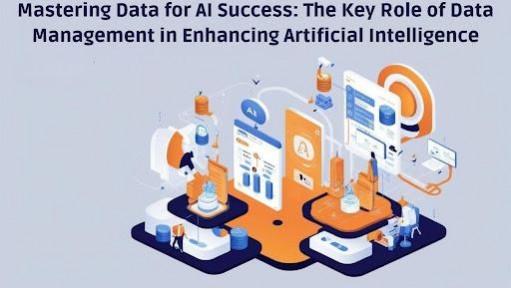
In a rapidly evolving digital landscape, Artificial Intelligence (AI) continues to transform industries, but its success is heavily reliant on the quality and organization of the data it operates on. In a recent article, Sumit Prakash Singh explores how Master Data Management (MDM) is emerging as the cornerstone for AI readiness. MDM ensures that organizations can manage their most critical business data in a way that fuels AI performance, offering tangible improvements across multiple sectors.
Setting the Stage for AI Success
In today's rapidly evolving technological landscape, the true potential of AI can only be realized when backed by well-managed, consistent, and clean data. AI models, no matter how advanced, will only perform as well as the data they are trained on. He emphasizes that a solid MDM foundation is vital for AI implementation, as it ensures data quality and consistency across an organization. With fragmented data often leading to inconsistent and biased AI results, MDM works by integrating and cleaning data to create a "single source of truth" that AI models can rely on.
Overcoming Data Fragmentation
A key challenge in AI adoption is data fragmentation, with data spread across various systems and formats. Master Data Management (MDM) tackles this by standardizing and integrating data, eliminating silos. This enables AI to access comprehensive, consistent, and organized data across different systems, ensuring more meaningful insights through entity resolution and seamless data communication.
Ensuring Data Consistency for AI Performance
AI systems rely on consistent, accurate data to perform effectively. Inconsistent data, such as varying formats or definitions, can hinder pattern recognition, leading to inaccurate outcomes. Master Data Management (MDM) ensures data consistency through standardized processes and governance, enabling AI to analyze data reliably. This consistency is vital for trustworthy AI insights, boosting stakeholder confidence.
Enabling Data Integration and AI Interoperability
AI success depends on integrating diverse data sources, which is made possible by Master Data Management (MDM). MDM creates a unified environment, linking structured and unstructured data like documents, images, and transactional information. This integration improves AI performance and supports advanced applications such as natural language processing and computer vision, creating a more powerful data ecosystem.
Achieving Governance and Compliance in AI
As AI adoption increases, so does regulatory scrutiny on data usage, with laws like GDPR and CCPA emphasizing data accuracy and governance. Master Data Management (MDM) is crucial for ensuring AI compliance by establishing frameworks that control data usage. High-quality, traceable data enhances AI transparency and accountability, especially in regulated industries like healthcare and finance.
The Future of AI: Scalability and Data Enrichment
As AI continues to evolve, so too must the data that supports it. MDM facilitates the scalability of AI initiatives by enabling organizations to manage large volumes of data and adapt to emerging technologies. He notes that organizations with mature MDM practices are more agile, able to scale their AI systems, and integrate new data sources more efficiently. Additionally, by enriching core business data with external sources, MDM ensures that AI can generate more accurate predictions and provide deeper insights, especially in competitive industries.
In conclusion, Sumit Prakash Singh's exploration of MDM highlights how critical it is for AI readiness. By ensuring data quality, consistency, and integration, MDM not only sets the stage for successful AI implementation but also enables organizations to leverage the full potential of AI technologies. As industries continue to adopt AI, those that invest in robust MDM systems will likely see improved decision-making, operational efficiency, and enhanced customer experiences. With MDM as a foundational strategy, businesses can confidently scale their AI initiatives and stay ahead of the curve in a data-driven world.









